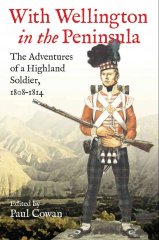Home
Home
My Challenge to You
The Challenge
OK, gentle visitor, I have a challenge for you. Can anyone out there cite a German source for the claim that during the First World War the kilties were known as the “Ladies from Hell” ? I’ve got a feeling this name might just be the products of the British propaganda bureau or over-imaginative journalism. I have come across a German nickname for the kilties but it does not convey the respect or awe suggested by the above. I think for that reason, what I found rings truer. Very few troops are given respectful nicknames by their foes. It's funny how fictions can become accepted as truth through constant repetition. Many people believe that Berwick upon Tweed was still at war with Russia until the 1960s. The story went that the declaration of war against Russia when the Crimean War broke-out in 1853 included Berwick as a separate entity because it's status was still in dispute; the Scots claiming in the 1707 Treaty of Union it was annexed territory and refusing to recognise it as part of England. When the peace was signed in 1856, Berwick was not mentioned. Sadly, not true. A 1746 Act of Parliament declared Berwick officially part of England. The Crimean War claim was first made shortly before the First World War. It was even said, wrongly again, that the Soviets signed a "peace treaty" with Berwick in 1966 to rectify the omission.
The Conclusion
Risking the Wrath
OK, I’m going to risk the wrath of the old soldiers, the really old soldiers, and proclaim that I don’t believe the Germans ever dubbed the Highland regiments during the First World War "The Ladies from the Hell". I haven’t been able to find anyone who has come up a German source for this claim. Maybe, perhaps, a snivelling German prisoner trying to curry favour with his kilted captors sold them a pup along the lines of Ladies from Hell; but I doubt even that. Soldiers just don’t give their opponents respectful nicknames. The tenacious teenage Germans who opposed the three Scottish infantry divisions in northwest Europe after D-Day were dubbed “Those Bloody Para Boys” which may or may not have been intended as a grudging compliment. Previous attempts to debunk the "Ladies from Hell" have led to an outraged backlash from Second World War veterans of the Highland regiments. I can't say why that would be. While I was quizzing folk who I thought might know where the Ladies from Hell story might have originated, someone said they also doubted if the 51st Highland Division really topped a First World War German list of “Most to be Feared” units. As two other Scottish divisions, the 9th and 15th, had excellent records, I think my informant might have a point. Veterans don’t always know best. Those who dared to suggest the Scots Guards had massacred civilians in Malaya in 1948 were shouted down and ridiculed. And yet the High Court in London ruled recently that there was plenty of evidence that the massacre at Batang Kali did take place. All too often the reported response from veterans to less than glowing eulogies to the Scottish soldier is knee-jerk. Those who insist on re-writing history tend to miss out on the chance to learn from past experience.
Film Footage
I thought there might be some interest in these six links to the National Library of Scotland's Scottish Screen Archive.
- The first shows men of the the Gordon Highlanders leaving Aberdeen to fight in the Boer War in 1899.
-----
- The second shows the 4th Battalion of Queen's Own Cameron Highlanders marching past the camera while stationed near Bedford with the rest of the 51st Highland Division in 1914, or perhaps very early 1915.
----
- And the third shows the Argylls at Campbeltown in 1914. I wonder how many of them came back to Scotland in one piece after the First World War
------
- The fourth shows Glasgow-based Territorial soldiers training in around 1935. The Cameronian/Scottish Rifles and Glasgow Highlanders both feature prominently.
-----
- The fifth dates from 1935 and marks the 50th anniversary celebrations for the Queen's Own Cameron Highlanders' depot in Inverness
------
- The sixth is more modern. It shows the Queen's Own Highlanders on parade at Holyrood in 1964.
And one from Pathe film news
This might be of interest. It shows Black Watch in Korea circa 1953
Book Extract
As promised, a sample chapter from Scottish Military Disasters. I first became aware of this battle at a bus stop in Norway. My Norwegian language skills were almost non-existent but there seemed to be a road sign announcing "This Way to Dead Scottish People". Sadly, I had a bus to catch and didn't have time to go where the sign was pointing. But a little research back in Scotland quickly solved the mystery.
Massacre in Norway
Kringen 1612
The ambush and massacre of a party of Scottish mercenaries in 1612 proved a key historical event for Norwegian nationalists trying to foster an independence movement from Sweden in the early 17th century. The myth-makers fastened onto the so-called Battle of Kringen as an example of gallant Norwegians banding together to repel a foreign foe. The fact that many of the 116 Scots murdered after the ambush had been virtually kidnapped and forced into mercenary service appears to have been conveniently forgotten.
But what were the Scots doing in Norway in 1612 anyway?
Regimental Snapshot
The 93rd Sutherland Highlanders were widely acknowledged to be one of the most “Highland” of the Highland regiments. It’s been claimed that shortly before the Crimean War in 1854, only 30 of its members were not born in Sutherland, Inverness-shire or Ross-shire.
But only 16 years earlier, a snapshot of the regiment when it arrived in Canada in 1838 paints a different picture. Of 591 “other ranks” landed at Halifax in Nova Scotia 242 were born in the old Highland Counties of Caithness, Sutherland, Ross and Cromarty, Inverness-shire and Nairnshire. Caithness supplied the largest contingent, 80 men; Sutherland, 55, Ross and Cromarty, 46; and Inverness-shire 49. The second-largest contribution to the regiment came from Aberdeenshire, 73 men.
Fife supplied 42 members of the regiment, while Lanarkshire, which included Glasgow, contributed 34, Elgin and Moray, 40, and Perthshire, 33. The regiment counted seven Englishmen and two Irishmen in its ranks. Seven soldiers gave no place of birth and were recorded as being born “in the regiment”, the sons of soldiers and their wives.
More than half of the men, 381 out of 591, were listed as farm workers or labourers on enlistment. Of the 210 recruits who listed a trade, 64 were weavers, 32 were shoemakers and 26 were tailors. One man listed himself as a hairdresser and two as pipers.
Just short of half the soldiers in 1838, a total of 255, had less than five years service, and only 30 had more than 14 years with the colours. Their average age was just short of 25 years old and the average height was 5’8”. Five years after the Crimean War, in March 1861, the 93rd Sutherland Highlanders reported 92 Englishmen and 100 Irishmen out of a total of 1304 other ranks. Out of 51 officers, 29 were Scots, 18 were English and four were Irish.

The 93rd Highlanders circa 1854
Ask Me
If you didn't find the information you're looking for on this site; why not ask me? If I can't help you, I may be able to suggest where to look to get the answer -- ASK
Anyway, here's some of the information people have been looking for -
* The Irish regiments' pipers wore saffron kilts. So, if it's a recent photo, then either the Irish Guards or the Royal Irish Regiment.
*The two Scottish battalions that were captured at Singapore in early 1942 were the 2nd Gordon Highlanders and the 2nd Argyll and Sutherland Highlanders.
* The 1st battalion of the King's Own Scottish Borderers landed on Sword Beach as part of the 3rd Division on June 6th 1944. The 51st Highland Division's 153 Brigade, (5th Black Watch, 1st Gordon Highlanders and 5/7 Gordon Highlanders) landed in Normandy later the same day. The commander of the 3rd Division, Maj.-Gen. Tom Rennie, would later replace the commander of the 51st Highland, Maj.-Gen.Charles Bullen-Smith, after the latter's performance in Normandy was condemned by General Montgomery.
* I think best known of the so-called Pals Battalions to be raised in Scotland during the First World War would have been the 16th Royal Scots, often known as McCrea’s Battalion and centred around the Heart of Midlothian football team and its supporters, as well as players from several other east coast clubs. The 15th and 17th Royal Scots were also classed as Pals Battalions. The Highland Light Infantry’s 14th to 18th Battalions were also Pals, with the 15th (Tramways), 16th (Boys’ Brigade) and 17th (Chamber of Commerce) battalions being the best known. The Cameronians (Scottish Rifles) 13th Battalion should also be included. It was also a Bantam Battalion, being formed from men under the usual minimum recruitment height of 5’3”. None of the Highland regiments, nor the KOSB or Royal Scots Fusiliers, had Pals Battalions.
* The Tyneside Scottish, although a Territorial Army artillery unit these days, wear Tam O'Shanters and red hackles to celebrate their long standing association with the Black Watch.
* Yellow cuffs on a full dress Scottish-pattern scarlet doublet would suggest the Seaforth Highlanders, the Gordon Highlanders, the Argyll and Sutherland Highlanders or the King's Own Scottish Borderers.
Online
We have 381 guests and no members online





